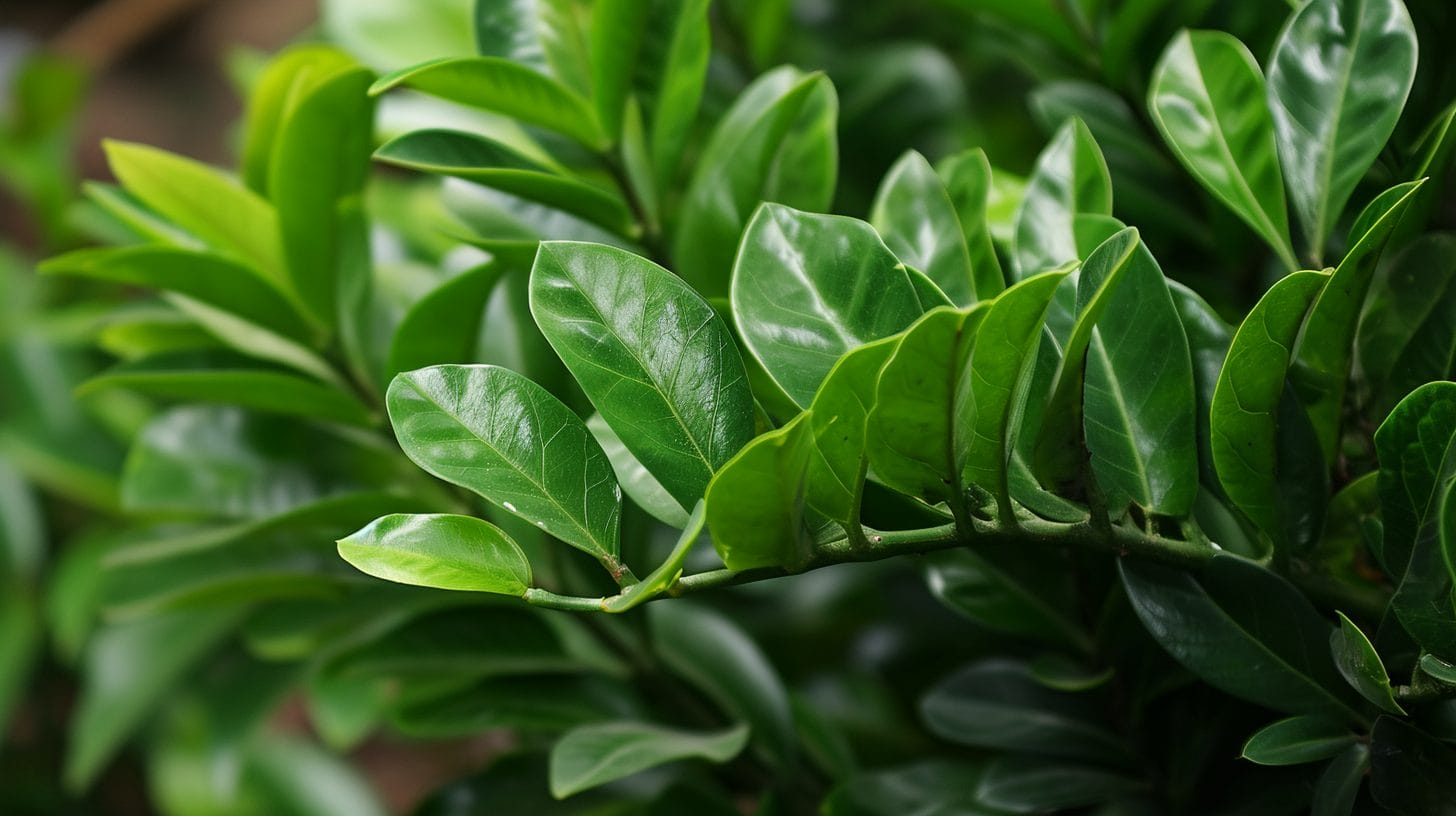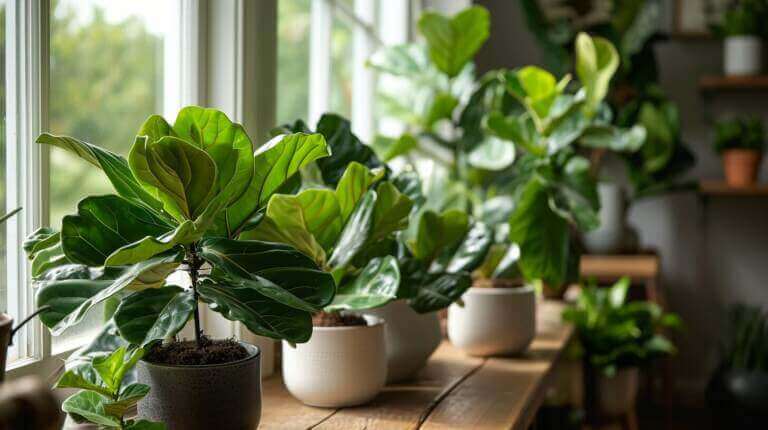Does ZZ Plants Purify The Air In Your Home? How Much ZZ Plant Actually Help Clean The Air In Home And Office
Are you searching for a natural way to improve the air quality in your home or office? Look no further than the ZZ plant. This article explores the truth behind the air purifying abilities of the ZZ plant, backed by scientific research and expert insights.
By understanding the plant’s natural filtration process and uncovering the factors that impact its air purifying potential, you can optimize the benefits of this remarkable plant.
Discover how the ZZ plant can contribute to a healthier and cleaner environment for you and your loved ones.
Key Takeaways
- Indoor plants, including the ZZ Plant, can reduce air pollution through phytoremediation.
- The ZZ Plant effectively filters out dust, pollen, and VOCs, improving indoor air quality.
- NASA research confirms the ZZ Plant’s ability to remove VOCs, thanks to its thick, waxy leaves and root system.
- To optimize the air purifying benefits of a ZZ Plant, it should be placed in bright, indirect light, watered thoroughly but allowed to dry out between waterings, and provided with good air circulation.
The Science Behind Air Purifying Plants
One cannot underestimate the importance of understanding the science behind air purifying plants in order to maximize their potential in improving indoor air quality. Understanding plant physiology is key to comprehending how these plants effectively reduce air pollution indoors.
Indoor plants play a crucial role in reducing air pollution by removing harmful substances from the air through a process called phytoremediation. Phytoremediation is a natural process where plants absorb toxins through their roots and convert them into harmless byproducts. This process is made possible by the intricate network of cells within the plant, particularly in the roots and leaves.
In plant physiology, the roots act as a filtration system, absorbing various particulate matter, such as dust, pollen, and volatile organic compounds (VOCs). These substances are then transported through the plant’s vascular system to the leaves, where they undergo a series of chemical reactions. Through a process known as transpiration, plants release water vapor into the air, which helps to humidify and cool the surrounding environment while also expelling toxins.
Furthermore, plants have the ability to break down and metabolize certain air pollutants, effectively removing them from the indoor environment. This process involves the activation of enzymes within the plant cells, which break down and transform harmful substances into less toxic forms.
Understanding the ZZ Plant’s Natural Filtration Process
The intricate network of cells within the ZZ plant’s roots and leaves enables it to effectively filter out various particulate matter, such as dust, pollen, and volatile organic compounds (VOCs), contributing to its natural air purification abilities. Contrary to common misconceptions, the ZZ plant is not only a beautiful addition to your indoor space, but also a powerful air cleanser.
To ensure the ZZ plant’s growth and optimal air purifying abilities, it is important to understand its growth requirements. This plant thrives in indirect sunlight and can tolerate low light conditions, making it suitable for various indoor environments. It prefers well-draining soil and requires moderate watering, allowing the soil to dry out between waterings to prevent overwatering and root rot.
In recent years, there has been significant research on the ZZ plant’s air cleansing abilities. Studies have shown that this plant is particularly effective at removing certain VOCs, including benzene, toluene, and xylene, which are commonly found in indoor environments and can have detrimental effects on human health. The ZZ plant’s ability to filter out these chemicals can contribute to improving indoor air quality and reducing the associated health risks.
In the following section, we will delve deeper into the research conducted on the ZZ plant’s air cleansing abilities and explore its potential benefits in different settings.
Research on the ZZ Plant’s Air Cleansing Abilities
Recent studies have provided valuable insights into the ZZ plant’s air cleansing abilities, demonstrating its effectiveness in removing harmful pollutants from indoor environments. The ZZ plant, scientifically known as Zamioculcas zamiifolia, has gained popularity in recent years as a low-maintenance houseplant. However, its air purifying capabilities have remained a subject of debate.
According to research conducted by NASA, the ZZ plant is capable of removing volatile organic compounds (VOCs) from the air. VOCs are common indoor pollutants emitted by household products, such as cleaning agents, paints, and furniture. These pollutants can have detrimental effects on human health, causing respiratory issues and allergies.
The ZZ plant’s air cleansing ability is attributed to its unique leaf structure. Its thick, waxy leaves act as natural filters, trapping pollutants and toxins in the air. Additionally, the plant’s roots have the ability to absorb and break down harmful substances, further contributing to its air purifying qualities.
To maximize the zz plant benefits, proper care is essential. The plant thrives in bright, indirect light and prefers well-draining soil. Overwatering should be avoided, as it can lead to root rot. Regular cleaning of the leaves with a damp cloth or gentle spray of water can help maintain the plant’s air purifying efficiency.
Factors That Affect the ZZ Plant’s Air Purifying Potential
Various environmental factors, such as temperature, humidity, and air circulation, can significantly influence the ZZ plant’s air purifying potential.
While the ZZ plant is known for its low maintenance and air-purifying qualities, it is important to provide the optimal conditions for it to thrive and effectively cleanse the air in your indoor space.
Here are some factors to consider when caring for your ZZ plant to enhance its air purifying abilities:
- Temperature: The ideal temperature range for a ZZ plant is between 65-75°F (18-24°C). Extreme temperatures can stress the plant and hinder its air purifying capabilities.
- Humidity: ZZ plants are adaptable to different humidity levels, but they tend to thrive in moderate humidity. Aim for a humidity level of around 40-60% to promote optimal growth and air purification.
- Air circulation: Good air circulation is crucial for the ZZ plant’s air purifying abilities. Ensure that the plant is placed in an area with adequate air movement, such as near a fan or open window.
- Light exposure: While ZZ plants can tolerate low light conditions, providing them with bright, indirect light can help stimulate their growth and air purifying potential.
- Proper watering: Overwatering or underwatering can negatively impact the ZZ plant’s overall health and air purifying abilities. Water the plant thoroughly when the top inch of soil is dry to the touch.
Tips for Optimizing the Air Purifying Benefits of a ZZ Plant(Zamioculcas Zamiifolia)
To optimize the air purifying benefits of a ZZ plant, it is essential to follow proper care techniques and create an environment that promotes its growth and air cleansing potential. When it comes to placement, it is recommended to keep the ZZ plant in an area with bright, indirect light. Direct sunlight can scorch the leaves, while low light conditions can result in stunted growth. As for watering, ZZ plants prefer to be slightly dry between waterings. Overwatering can lead to root rot, so it is important to allow the soil to dry out before watering again. Additionally, ZZ plants thrive in well-draining soil, so make sure to choose a pot with good drainage.
Apart from its aesthetic benefits, the ZZ plant has been found to improve indoor air quality. It is known for its ability to remove toxins such as formaldehyde, xylene, and toluene from the air. These harmful substances can be found in common household products like paints, adhesives, and cleaning agents. By having a ZZ plant at home, you can significantly reduce the levels of these pollutants, creating a healthier living environment for you and your family.
Frequently Asked Questions
Will Cleaning ZZ Plant Leaves Help Enhance Its Air Purifying Abilities?
Tips for maintaining clean zz plant leaves can indeed help enhance its air purifying abilities. By regularly wiping the leaves with a damp cloth or using a gentle spray of water, any accumulated dust or dirt can be removed. This allows the plant to effectively carry out its natural process of air purification, resulting in better indoor air quality.
How Often Should I Water My ZZ Plant?
When it comes to zz plant care, one important aspect to consider is the watering frequency. ZZ plants are known for their ability to tolerate drought, making them a low-maintenance choice for indoor plants.
It is recommended to water your zz plant thoroughly, allowing the soil to dry out between waterings. Overwatering can lead to root rot, so it is important to strike a balance and avoid excessive moisture.
Regularly checking the soil moisture level and adjusting the watering schedule accordingly is key to the successful care of zz plants.
Does the ZZ Plant Release Oxygen at Night to Improve Air Quality?
During the night, the ZZ plant’s ability to release oxygen is a topic of interest for indoor plant enthusiasts.
Research suggests that while most plants release oxygen during the day through photosynthesis, the ZZ plant’s oxygen release at night is minimal.
However, it is important to note that the overall benefits of indoor plants, including the ZZ plant, still contribute to improving air quality by reducing carbon dioxide levels and increasing humidity.
Is the ZZ Plant Safe for Pets and Children?
The safety of the ZZ plant for pets and children is a concern for many. It is important to evaluate the potential toxicity of the plant and take necessary precautions.
While the ZZ plant is generally considered to have low toxicity, it is still advisable to keep it out of reach of pets and children. The plant contains compounds that can cause irritation or digestive upset if ingested.
Therefore, it is recommended to exercise caution and ensure proper supervision when having a ZZ plant in a household with pets and children.
Does a ZZ plant purify the indoor air?
Yes, the ZZ plant is an excellent air purifier. It’s a popular indoor plant known for its ability to improve air quality by absorbing carbon dioxide and releasing oxygen.
How does a ZZ plant compare to other air-purifying plants like the snake plant or rubber plant?
The ZZ plant, snake plant, and rubber plant are all common house plants that are known for their air-purifying abilities. They absorb pollutants like formaldehyde from the air and release oxygen, improving indoor air quality.
What are the benefits of having a ZZ plant as a houseplant?
The ZZ plant is a tropical houseplant that’s easy to care for and looks beautiful with its dark green leaves. It’s also known for its air-purifying abilities, making it a great choice if you’re looking to improve indoor air quality.
Can a ZZ plant survive in low light conditions?
Yes, one of the reasons the ZZ plant is such a popular indoor plant is because it can tolerate low light conditions. However, it does prefer bright, indirect light.
Can Regularly Watering a ZZ Plant Improve Its Air Purifying Abilities?
Regularly watering a ZZ plant is crucial for its overall health, but does it enhance its air purifying abilities? While proper hydration ensures optimal growth, the plant’s air-purifying capacity primarily depends on its leaves, not water intake. To maximize its air-purifying potential, focus on dusting the leaves regularly, providing adequate light, and maintaining a suitable temperature and humidity level. Remember these zz plant watering tips to keep your plant thriving, but be aware that its air purifying abilities aren’t directly influenced by watering alone.
How often should I water my ZZ plant?
ZZ plants are quite drought-tolerant and don’t need to be watered very often. Wait until the soil is completely dry before watering your ZZ plant again.
What care does a ZZ plant need?
ZZ plants are easy to grow and require minimal care. They need moderate light and should be watered when the soil is dry. Overwatering can cause root rot.
Can a ZZ plant improve the air quality in my office?
Yes, the ZZ plant is a great office plant because it can improve air quality by absorbing pollutants. Plus, it’s easy to care for and can tolerate the often less-than-ideal light conditions found in many offices.
Does a ZZ indoor Plant give off oxygen?
Yes, like all plants, ZZ plants absorb carbon dioxide and release oxygen as part of photosynthesis. This process helps to clean the air in your home or office.
What pollutants can a ZZ Plant remove from the air?
The NASA Clean Air Study found that plants like the ZZ Plant can remove pollutants such as xylene from indoor air.
Is it true that all plants purify the air?
While it’s true that all plants absorb carbon dioxide and release oxygen, not all plants have significant air-purifying abilities. However, according to the NASA study, many common houseplants including the ZZ Plant do help to purify the air.







